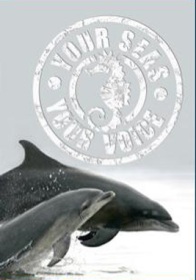Published on: July, 06 2011 by Bob Egelko, San Francisco Chronicle – Leatherback sea turtles gain critical habitat.
The Obama administration agreed Tuesday to protect an area of Pacific coastal waters by November as critical habitat for the endangered leatherback sea turtle, settling a lawsuit by conservation groups.
 The National Marine Fisheries Service had settled an earlier suit by proposing in January 2010 to designate 70,600 square miles of waters off California, Oregon and Washington as a refuge for the huge migrating reptiles and the jellyfish they eat. The California zone would extend from Point Vicente in Los Angeles County to Point Arena in Mendocino County.
The National Marine Fisheries Service had settled an earlier suit by proposing in January 2010 to designate 70,600 square miles of waters off California, Oregon and Washington as a refuge for the huge migrating reptiles and the jellyfish they eat. The California zone would extend from Point Vicente in Los Angeles County to Point Arena in Mendocino County.
The Center for Biological Diversity and other conservation advocates accused the government in a lawsuit filed in April of ignoring a January 2011 deadline under the earlier settlement for a final designation of critical habitat. The agency has not said whether it plans to change the proposed boundaries in the plan that is now due by Nov. 15.
“We believe the critical habitat as proposed is inadequate,” said Teri Shore, program director of Turtle Island Restoration Network, another plaintiff in the suit. Although the zone is a step toward preserving the leatherbacks, she said, it should cover a broader area off the California coast where drift gillnet fishing, a threat to the turtles, is now banned from mid-August to mid-November.
The federal agency has also heard from Pacific Gas & Electric Co., which urged flexibility in the rules to avoid a potential multibillion-dollar cost of a new water-cooling system for the Diablo Canyon nuclear power plant on the San Luis Obispo County coast.
After the government designates critical habitat for an endangered species, sponsors of all projects affecting the zone must consult with the National Marine Fisheries Service and take any needed protective measures.
Leatherbacks are the largest sea turtles, growing up to 8 feet long and weighing as much as a ton. They also have the longest migration, 12,000 miles each summer and fall from nesting grounds in Indonesia to the West Coast of the United States.
They were placed on the endangered species list in 1970, but their numbers have continued to fall because of pollution and accidental deaths caused by commercial fishing, according to government reports. Conservation groups said the Pacific population has plunged by more than 95 percent since 1980.





















